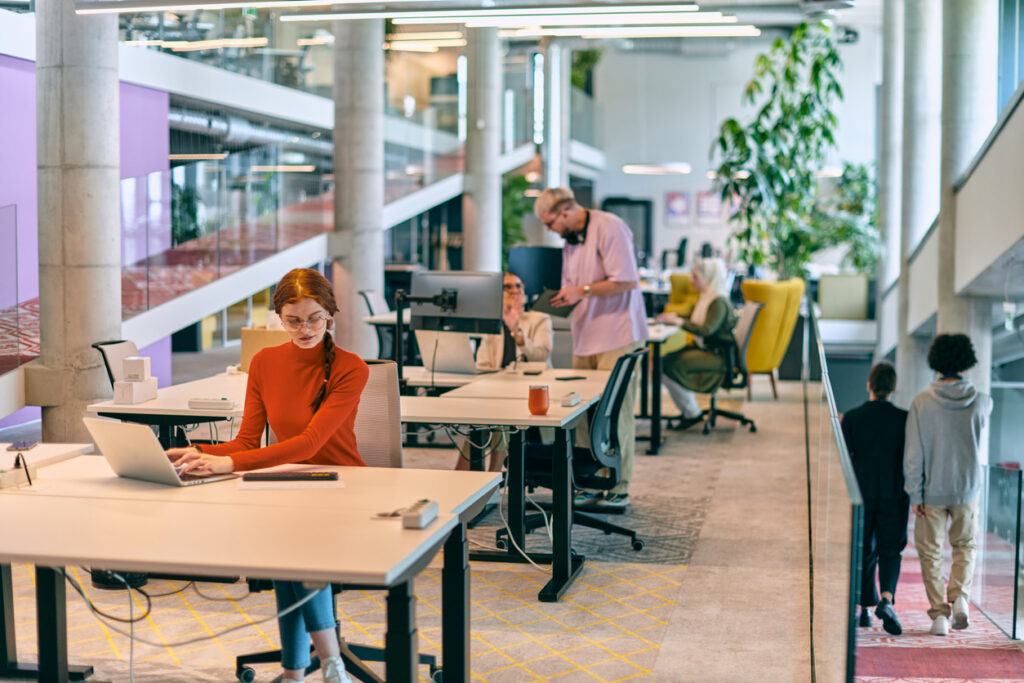In today’s fast-paced environment, the design of workplace spaces significantly impacts the mood, health, and productivity of employees. Facility managers and owners are shifting their focus. They’re no longer just creating spaces that fulfill basic needs. Instead, they’re crafting environments that improve the well-being and efficiency of everyone inside. This shift towards spaces that positively influence the occupants’ physical and psychological states not only enhances productivity but also cultivates a healthier workplace culture.
The Significance of Well-Conceived Workspaces
Numerous studies have established a link between workspace design and employee productivity and well-being. Well-lit, ventilated, and aesthetically pleasing spaces can boost mood and energy, leading to enhanced work performance. On the flip side, poorly designed spaces can cause discomfort and even health issues. Thus, the design of a workspace plays a critical role in the well-being and efficiency of its occupants.
Enhancing Natural Light and Ventilation
Natural light and fresh air play pivotal roles in creating an optimal work environment. Integrating large windows, skylights, and smart positioning of workstations to maximize natural light can make a significant difference. Good ventilation is equally important for maintaining air quality and ensuring the well-being of everyone in the workspace.
Prioritizing Ergonomic Design
Comfortable furniture and equipment that promote good posture are essential. Options like ergonomic chairs, adjustable desks, and keyboard trays help in reducing physical discomfort, making a noticeable difference in daily productivity.

Introducing Green Spaces
Incorporating plants and living walls into the office not only beautifies the space but also enhances air quality and reduces stress levels. Such natural elements can transform the ambiance, making it more welcoming and restorative.
Flexible Workspaces for Diverse Needs
The rise of flexible workspaces reflects the evolving needs of today’s workforce. Offering a mix of areas for collaboration, focus, and relaxation supports various work styles and tasks, thereby boosting overall satisfaction and productivity.
Embracing Biophilic Design
Biophilic design takes the concept of integrating nature into the workspace to a new level. It includes using natural materials and colors, and even incorporating water features. This approach has been shown to reduce stress, enhance cognitive function, and improve mood and creativity.
Integrating Technology Seamlessly
Incorporating infrastructure for advanced technology ensures that workspaces are not only functional but also future-proof. This supports high-speed internet, wireless communication, and smart technology, facilitating seamless work processes.
Aesthetics and Personal Touches Matter
A visually appealing workspace that allows for personalization can significantly impact how connected and satisfied employees feel with their environment. Artwork, brand elements, and personal spaces contribute to a sense of identity and belonging.
Wellness Areas: A Must-Have
Dedicating spaces for physical and mental relaxation, such as fitness centers or quiet rooms, underscores the importance of holistic well-being in the workplace. It shows a commitment to supporting employees’ health and well-being comprehensively.
The Proactive Role of Facility Managers
Facility managers and owners play a crucial role in implementing these design principles. They must align the workspace design with the organization’s unique culture and needs. This may involve collaboration with interior designers and architects to create spaces that reflect the company’s values and goals. Additionally, staying informed about the latest workspace design trends and incorporating sustainable practices is key to creating environments that inspire and support employees.
Conclusion
Thoughtful facility design is a powerful tool for promoting productivity and well-being. By focusing on natural lighting, ergonomic setups, flexible spaces, and wellness areas, facility managers can create environments that not only meet functional needs but also inspire and uplift. As workspace design continues to evolve, the emphasis on creating people-centric environments will undoubtedly grow, highlighting the critical role of our surroundings in shaping our work experiences and overall well-being.

